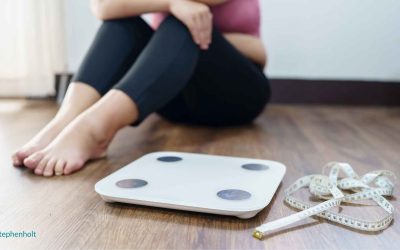The Surprising Benefits of Cold Plunges for Women Over 50
Would you willingly jump into freezing water? It might sound like a shock to the system—literally—but cold plunges have gained popularity as an effective recovery and health tool. For active women over 50 looking to stay fit and resilient, cold exposure can offer unique benefits. It’s not just a trendy wellness fad; it’s rooted in science.
What Is a Cold Plunge?
A cold plunge involves immersing yourself in water at temperatures typically between 50°F and 59°F for a brief period—usually 2 to 5 minutes. It can be done in specialized tubs, natural bodies of water, or even your home bathtub with a generous helping of ice. The sudden cold triggers a variety of physiological responses that can benefit both body and mind.
Why Cold Plunges Are Worth Considering
Cold plunges aren’t just for elite athletes or thrill-seekers. They’re an excellent recovery tool, and their benefits can be particularly impactful for women over 50. Here’s why:
1. Reduces Muscle Soreness and Joint Pain
If you’ve ever applied an ice pack to a sore muscle or achy joint, you’ve experienced a small-scale version of what a cold plunge can do. The cold reduces inflammation, decreases swelling, and helps speed up recovery after physical activity.
For women over 50 who may deal with joint pain or stiffness from arthritis or old injuries, cold plunges can offer significant relief. By constricting blood vessels and then encouraging better circulation as the body warms up, cold immersion can help reduce the lingering discomfort that might otherwise discourage exercise.
2. Boosts Metabolism
Feeling like your metabolism isn’t what it used to be? You’re not alone. As we age, metabolism slows, making it harder to maintain a healthy weight. Cold plunges can help give your metabolism a much-needed nudge.
Cold exposure activates brown fat—a type of fat that burns calories to produce heat. Studies suggest that regular cold exposure can increase metabolic rate, helping your body burn more calories even at rest. While it’s not a magic solution, it’s a helpful boost, especially when paired with strength training and proper nutrition.
3. Improves Circulation
Cold plunges cause your blood vessels to constrict during immersion and dilate as your body warms up. This vascular workout improves overall circulation, delivering oxygen and nutrients more efficiently throughout your body.
Better circulation can help reduce the feeling of “cold hands and feet,” a common complaint among women over 50, and may even support heart health by promoting vascular resilience.
4. Supports Mental Health
The mental benefits of cold plunges are arguably as powerful as the physical ones. The initial shock of cold water triggers the release of endorphins—your body’s natural feel-good chemicals. Many people report feeling invigorated, energized, and even euphoric after a plunge.
For women over 50 who might face stress, anxiety, or the occasional mood dip, cold plunges can act as a natural mood booster. The sense of accomplishment after stepping out of freezing water? That’s just a bonus.
5. Improves Sleep Quality
Struggling to fall or stay asleep? Cold plunges might help. The rapid cooling of your body temperature can promote deeper, more restorative sleep. Cold exposure helps regulate circadian rhythms and encourages your body to produce melatonin, the hormone that signals bedtime.
As a result, you might find yourself waking up refreshed and ready to tackle your day with more energy.
6. Enhances Immune Function
Cold plunges give your immune system a little nudge. Studies suggest that regular exposure to cold water can increase white blood cell production, which helps your body fight off illness. For women over 50, keeping the immune system in top shape is an important part of maintaining overall health and staying active year-round.
Tips for Getting Started
Cold plunges aren’t about diving in headfirst and staying until you’re numb. If you’re new to the idea, ease into it:
- Start slow: Begin with cold showers for 30 seconds at the end of your usual shower. Gradually increase the time and reduce the water temperature.
- Time it right: Morning plunges can boost energy, while evening plunges can promote better sleep. Experiment to see what works best for you.
- Limit the duration: Stick to 2–5 minutes per session. Prolonged exposure can do more harm than good.
- Listen to your body: If you feel dizzy, excessively cold, or uncomfortable, it’s okay to stop. Safety first!
Addressing Common Concerns
“Isn’t cold water dangerous?”
It can be if you overdo it or have certain health conditions. Always consult your doctor if you have heart issues, circulation problems, or are unsure whether cold plunges are safe for you.
“I hate being cold. Why would I do this?”
The initial shock of cold water is uncomfortable, but most people adapt quickly and even come to enjoy the experience. The key is starting slow and focusing on the benefits rather than the discomfort.
“Do I need special equipment?”
Not necessarily. While some people invest in cold plunge tubs or visit specialized facilities, you can start with a regular bathtub and some ice. Natural bodies of water work too—just be sure they’re safe and clean.
Final Thoughts
Cold plunges might seem extreme, but they’re an accessible and effective tool for enhancing physical and mental well-being. Whether you’re looking to recover faster, improve circulation, or simply feel more energized, this chilly practice can deliver.
Next time you find yourself tempted to write off cold plunges as a “crazy trend,” consider giving it a try. You might just find that stepping out of your comfort zone—and into the cold—is exactly what your body and mind need.




